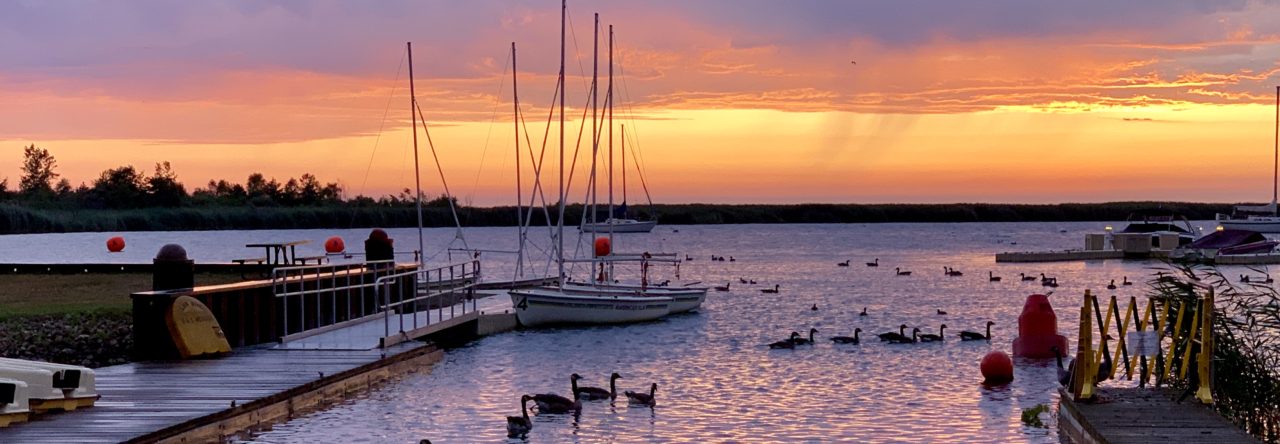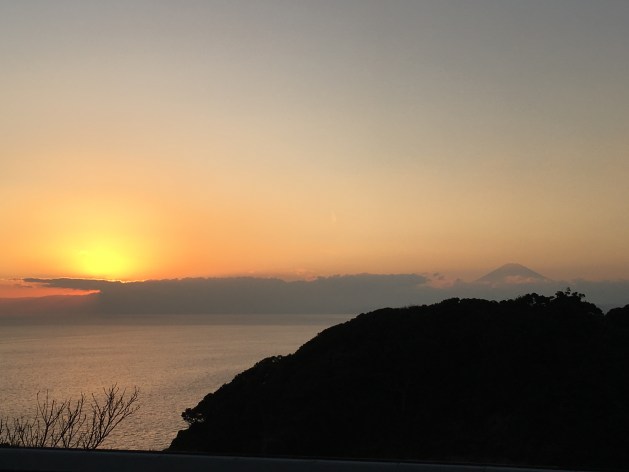During my Friday English class last week, one of my students told me about her visit to a clematis and sculpture garden near Mt. Fuji. From her description of her visit, I was interested in making a trip to the garden. As I looked around the Mishima area on my Google Maps app, I realized there was another place I had flagged to visit. I suggested to Katie we take our Tuesday adventures to the expressway and visit them both! Without difficulty, we were able to rent a car and leave before 8:00am Tuesday morning.
Side note: went traveling a far distance in a vehicle, I find it easier to rent a car for two reasons. 1. I only trust our Hooptie so much. 2. Driving on the expressway is expensive because of the high road tolls (¥8000 – $80 round trip to areas around Mt. Fuji). Toll vouchers are included with a rental car ($58 for a 1-day rental). This makes it actually cheaper to rent a car than to drive your own!

Now, back to our story. We arrived at our first stop, Mishima Skywalk around 9:30am. Before heading to the Skywalk, we stopped to use the restroom facilities. Just when I thought Japanese toilets couldn’t get any more amazing, we were greeted by a large banner advertising “luxury toilet.” The restroom was immaculate and complete with not just functional “thrones,” but also lounging ones – inside and outside the restroom! Seriously, I couldn’t make this stuff up!!



After our pit stop, we were ready to see Mt. Fuji and walk the Mishima Skywalk. The Mishima Skywalk is Japan’s largest suspension bridge. The bridge is 400m in length and connects Izu and Hakone. The bridge reaches a height of 70.6m as it stretches across the valley below. The width of the bridge footpath is 1.6m (wide enough to allow two wheelchairs to pass one another). Needless to say, the view was spectacular!



We were glad we arrived early. Mt. Fuji was starting to cloud over when we arrived. By the time we were leaving, it was mostly covered.
The walk across the bridge is not for the faint of heart. If you have a fear of heights, it might be best to skip this attraction.



Once we made it to the far side, we were greeted by the safety sign. I hope the Skywalk receives this award every year!!

On the north side of the bridge, is a natural area with a few trails and the flower drop. For ¥200, you’re invited to purchase a flower seed attached to a piece of wood. When you cross back over the bridge, you can toss the wood chip and make a wish. When your flower blooms, your wish will come true.


Also at the flower drop area were cute little forest eggs. Some were set along the trail and others where hiding behind a door on the trees. So, kawaii!





They were so cute!






From the construction and signs, Katie and I came to the conclusion the area would soon have a zip line attraction! Now that would be amazing!


During our walk back across, the wind really started to pick up. The bridge was really swaying! It was kindof fun to not hold on! Look, Mom! No hands!

One of the cafes was called the Sky Garden. Here we enjoyed a snack while sitting under the phenomenal hanging plants.

After our snack, we were ready to head to our next destination. We drove about 30 minutes before reaching the Clematis no Oka Garden. We parked in one of the parking lots furthest from the garden. This afforded us the opportunity to walk through the woods and transit across two more suspension bridges. They weren’t as long or as high, but still very enjoyable.





Once we arrived at the garden, we were treated to beautiful clematis and strange sculptures.




Here are just a few of the interesting sculptures. We were a little surprised with the sculptures because there were a lot of naked men. It seemed out of context with the garden. But, I guess art is art.




Anyways, let’s get back to the clematis. There were so many different varieties and colors. Here is about half of the clematis pictures I took!







The lower part of the garden was filled with roses. They were also in full bloom and stunning.













The roses were a special treat because I wasn’t expecting them. After enjoying time in the sunshine and the beautiful garden, we hopped back in the car and headed home. The drive home was easy. Each time I make a trip to Mt. Fuji, I become a little more familiar and at ease driving. I consider this a win after living here for almost two years! I’m so glad we took the opportunity to road trip. It was a wonderful day exploring an area around Mt. Fuji we hadn’t had a chance to visit yet.































































































































































































